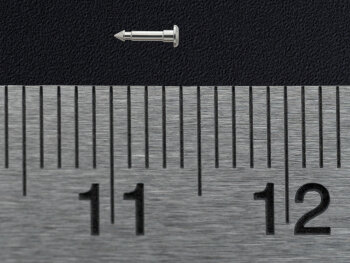
Micro machining is a high-precision machining process used to create extremely small, detailed parts and features - often measured in microns. It’s an essential machining technology for industries where small size, accuracy, and complexity in components are critical, such as medical/dental, aerospace, electronics, and instrumentation.
How Micro Machining Works
Micro machining uses specialized CNC machines, cutting tools, and techniques designed for ultra-fine detail work. Unlike conventional machining, where tolerances are often measured in thousandths of an inch, micro machining operates in the micron range (one micron equals one-thousandth of a millimeter).
Processes used in micro machining can include:
- Micro Milling – Uses extremely small cutting tools to shape intricate parts.
- Micro Drilling – Produces holes smaller than the diameter of a human hair.
- Micro Turning – Ideal for cylindrical parts with tiny diameters.
Benefits of Micro Machining
- Unmatched Precision – Micro machining is capable of creating components with tolerances of ±1 micron or better.
- Complex Geometries – Ideal for intricate designs with tiny features.
- Material Versatility – Works with metals, plastics, and specialty alloys.
- Reduced Material Waste – Precision cutting minimizes scrap.
- Consistency – Perfect for high-volume production of small parts.
Common Applications for Micro Machining
Micro machining is used for manufacturing:
- Surgical tools, implants, and medical device components
- Dental components, such as dental bur manufacturing
- Aerospace components such as fuel system parts and micro fasteners
- Electronic connectors and semiconductor components
- Precision parts for gauges and instrumentation, such as air valve components and terminals
- Micro parts for the automotive industry, like rollers, bearings, and shafts
Why Micro Machining Matters
As technology advances, components continue to get smaller and more complex. Micro machining enables manufacturers to meet these demands without compromising quality or performance. Whether producing a one-off prototype or millions of identical parts, micro machining delivers the precision, repeatability, and efficiency today’s industries require.

